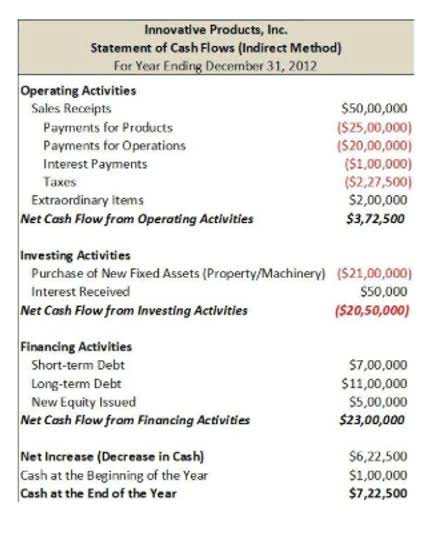
This means the business receives the items or services immediately but agrees to pay for them at a later date. A common example is purchasing inventory from a supplier with payment terms such as “Net 30,” indicating payment is due in 30 days. Cash purchase journal entries are just one type of bookkeeping transaction. When we buy products or goods, there is the possibility of a return back to the supplier due to faulty, damaged, or defective within the agreed timeframe. The accounting for purchase return and allowances is straightforward and the recording is different between a perpetual inventory system and a periodic inventory system. The Purchases Journal records all purchases made on credit, while the Cash Disbursements Journal records all purchases made with cash.
Explanation for Credit Purchase
This entry reflects the reduction in the cash balance when the supplier is paid. If the company purchases raw material, they need to record inventory and cash paid. As you can see, under the perpetual inventory system the merchandise inventory reduced by $100. Purchase is the process of buying a product or service which starts from making the request, receiving goods, and making payment. An effective Purchase system will help the company to filter unnecessary transactions and only important requests are approved. The company can also review and verify the inventory on October 12, 2020, by comparing the inventory in the account record with the physical inventory count.
Financial Accounting
Thus the Accounts payable account debits as the liability gets settled with the corresponding credit to the cash accounts as there is the cash outflow to the vendor. It’s primarily used by businesses that frequently purchase goods on credit. Small businesses with minimal credit purchases might not find it necessary. Yes, transactions recorded in the Purchase Journal must be posted to the General Ledger accounts, such as Accounts Payable and Inventory, to ensure the financial statements accurately reflect all business activities. When inventory is purchased on credit, the Inventory account on the balance sheet increases, reflecting more QuickBooks Accountant assets, and the Accounts Payable account also increases, indicating a rise in liabilities. This entry reflects the acquisition of inventory without the immediate outlay of cash, increasing both the company’s assets (inventory) and liabilities (accounts payable).
Purchases Journal
Yes, purchasing inventory is recorded as an increase in assets (Inventory account) because it adds physical stock that the company intends to sell for a profit. The correspondence accounts that should be recorded included accounts payable, inventories, expenses, and other related accounts. The entity uses a purchase journal only when it uses a manual to record accounting information. However, if an entity uses an accounting system to record its accounting and financial information, a purchase journal is not required. Entities might purchases goods or services and make the payments immediately to suppliers by cash.

Company Overview
Recordings of these transactions should be following the debit and credit roles. For example, credit purchases should be an increase in credit as it is the liabilities. If those purchases are for inventories, then inventories accounts should be debited. A typical purchases journal is structured with columns to capture details for each credit purchase.

Typical Purchase Transaction Journal Entries
This way the company can view the inventory balances after posting the purchase journal entry (or at any time). This initial phase is crucial as it sets the foundation for maintaining detailed records of purchases made on credit, which directly impacts the overall financial position and reporting accuracy of the business. By accurately recording these transactions, the Purchases Journal serves as a reliable source for updating the general ledger and tracking the flow of goods and related expenses. These adjustments play https://topwin99.net/oregon-department-of-revenue-oregon-personal/ a crucial role in maintaining accurate inventory levels and ensuring that the financial records align with the actual assets held by the business. By tracking returns and allowances, businesses can also gain valuable insights into the quality of their products and identify areas for improvement.

Double-entry accounting is an accounting system where every transaction affects at least two accounts, with at least one debit and one credit entry. Therefore, the meticulous recording and analysis of purchase amounts within Purchases Journal entries is fundamental for effective financial management and decision-making. Therefore, the significance of item descriptions within Purchases Journal entries extends beyond simple documentation, to encompass vital functions in inventory management and financial accounting. A Purchases Journal entry contains essential information such as the date of purchase, vendor name, invoice number, description of items acquired, purchase amount, and the corresponding impact on the Accounts Payable account.

Credit Risk Management
- So next time X Ltd. will purchase $5,000, it only has to pay $4,000 as $1,000 will be adjusted against credit note.
- By providing a dedicated space to track credit purchases, the journal saves time, improves efficiency, and helps businesses gain valuable insights into their buying habits.
- On 1st July 2019, it purchased some goods from one of its vendors on credit worth $ 250,000.
- Let’s illustrate with examples for a company named “Garden Supplies Co.” that purchases inventory both in cash and on credit.
- You need to note which account funds are taken from to pay for a purchase.
HighRadius stands out as a challenger by delivering practical, results-driven AI for Record-to-Report (R2R) processes. With 200+ LiveCube agents automating over 60% of close tasks and real-time anomaly detection powered by 15+ ML models, it delivers continuous close and guaranteed outcomes—cutting through the AI hype. On track for 90% automation by 2027, HighRadius is driving toward full finance autonomy. We are a group of professionals from accounting background happy to help individuals achieving their financial goals.
Timely and accurate transaction documentation is essential for maintaining the integrity of financial records and providing an audit trail. The transaction date influences the organization of transactions, aiding in the preparation of financial statements and analysis of business performance. Without precise transaction dates, the accounting process can be compromised, leading to potential errors purchase journal in financial reporting.